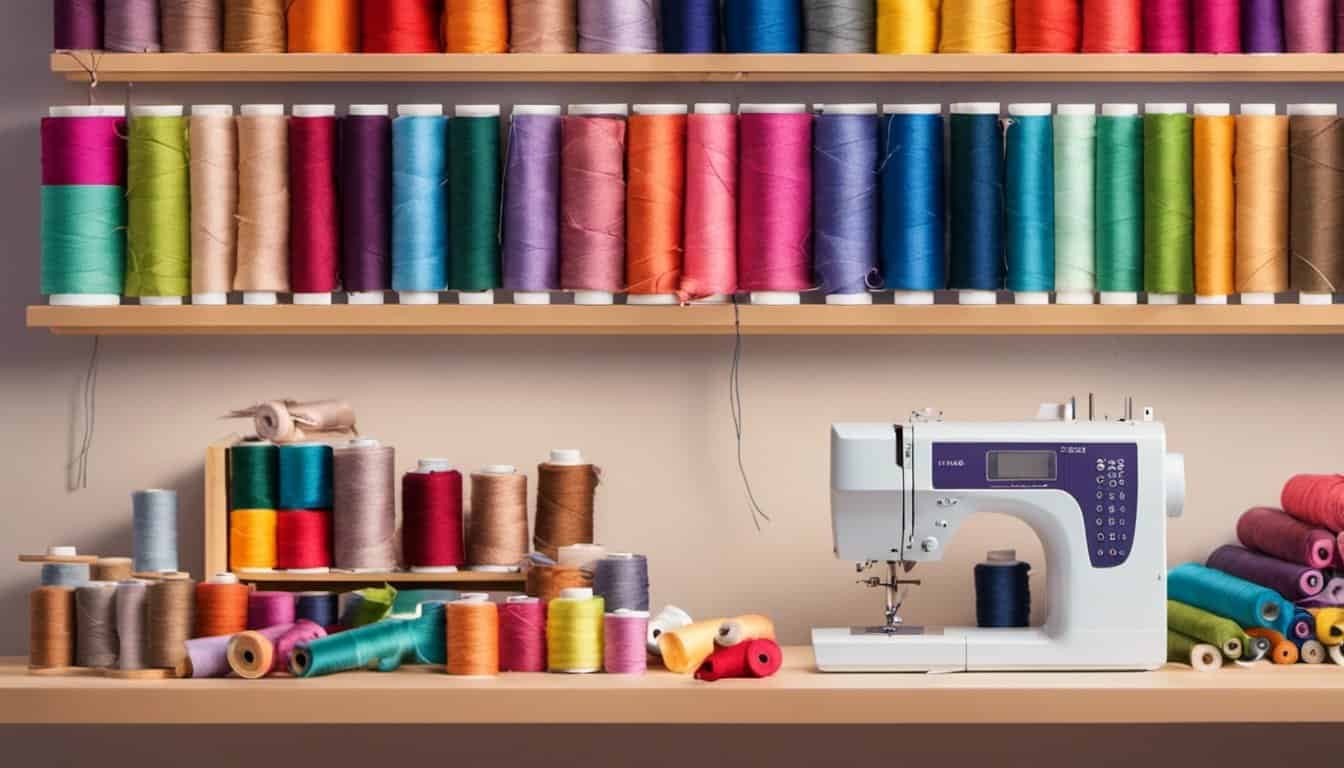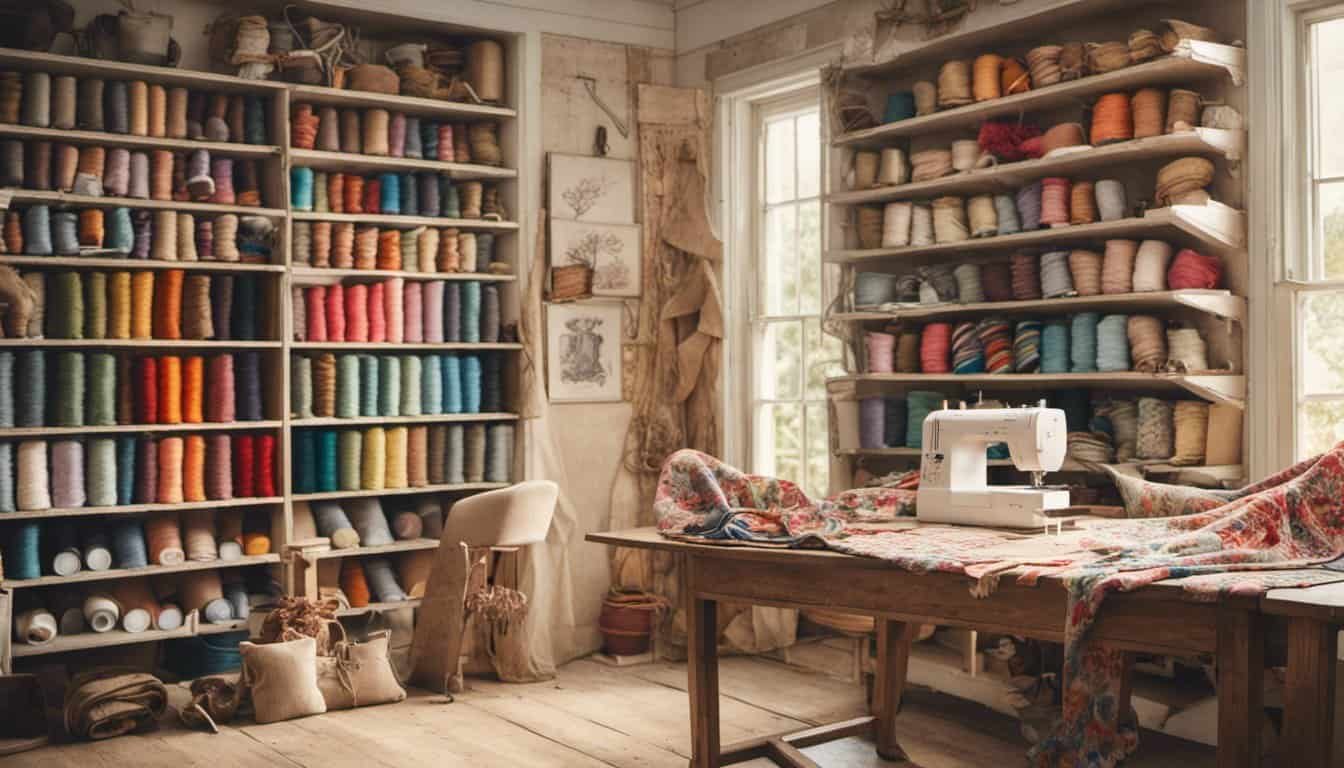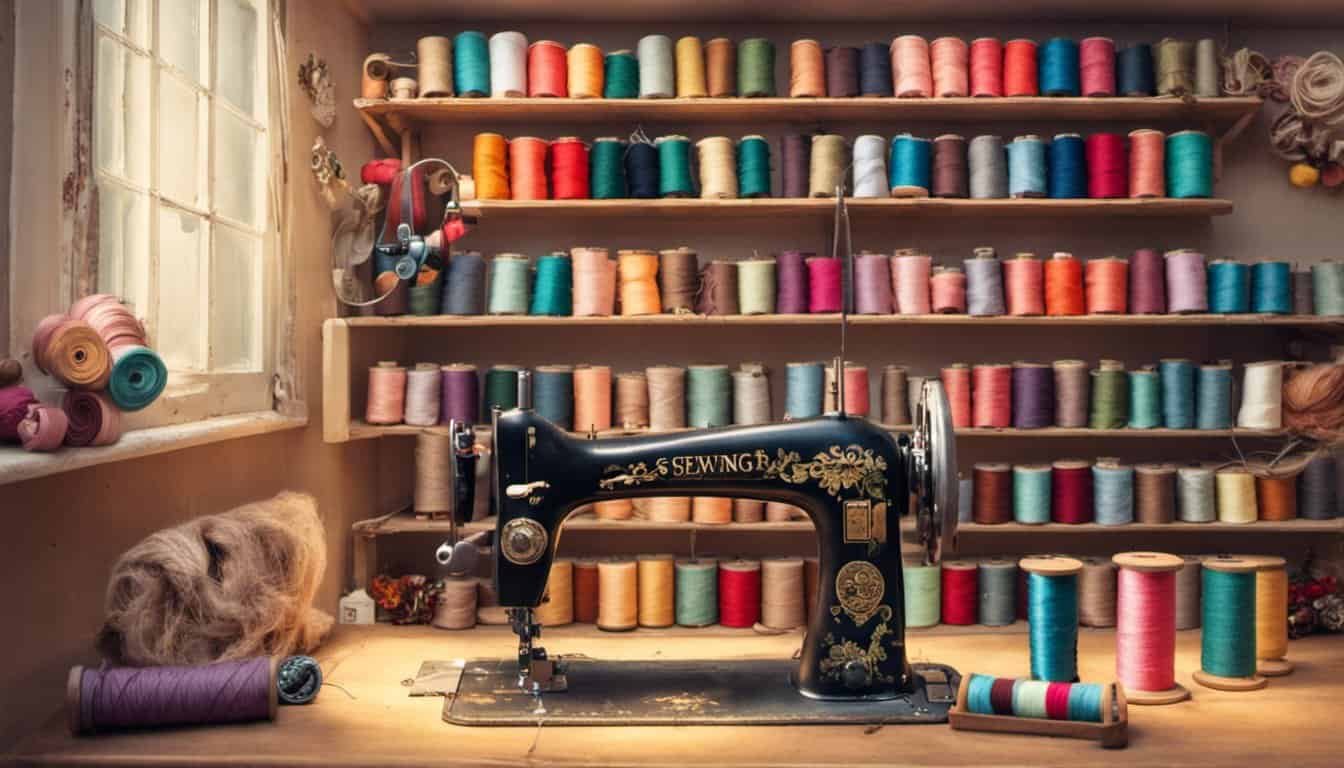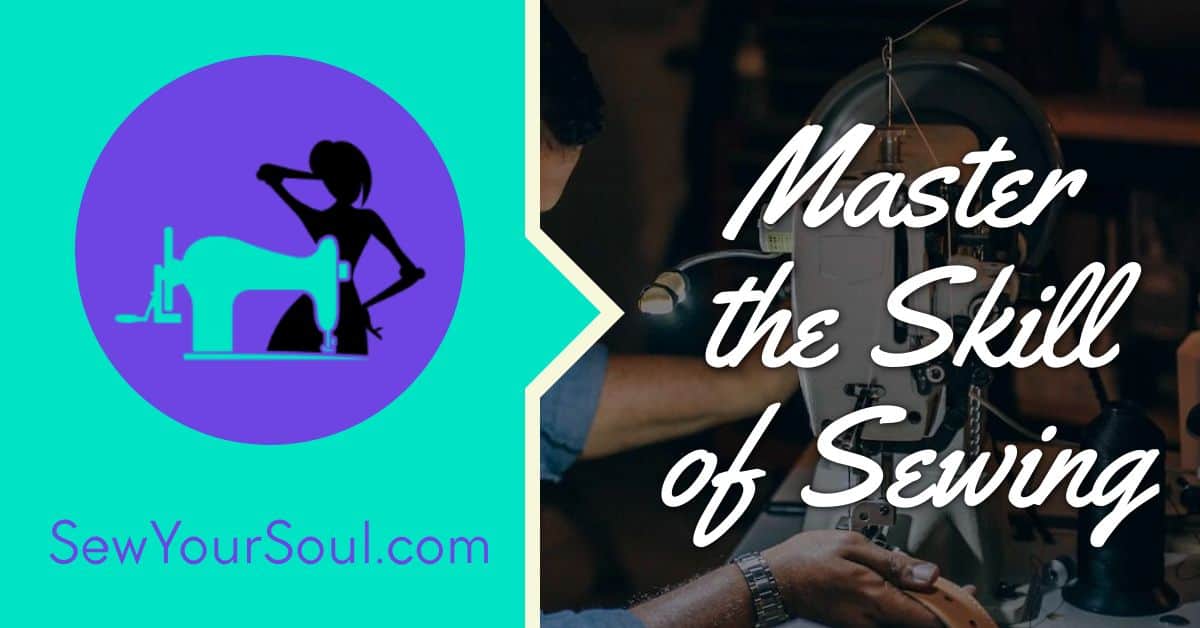Whether you’re new to sewing or looking to refine your skills, mastering a few key techniques can make all the difference. Sewing isn’t just about stitching fabric together; it’s an art form that allows you to express creativity while producing something functional and beautiful. From picking the right needle to perfecting your seams, each step brings you closer to crafting your masterpiece.
Imagine the joy of creating a custom piece that fits perfectly and reflects your personal style. With the right techniques, you’ll find sewing not only easier but also more enjoyable. Ready to dive into the world of sewing? Let’s explore some essential techniques that will elevate your sewing game and make your projects shine.
Overview of Sewing Techniques
Mastering various sewing techniques lets you create customized pieces that fit your style and needs. You’ll find a blend of traditional hand sewing and modern machine techniques offers versatility in your projects.
Hand Sewing Basics
Hand sewing is fundamental to your sewing skills. It provides precision for detailed work and is essential for tasks like hemming, stitching buttons, and repairing small tears. Techniques to master include:
- Running Stitch: Use it for basting and gathering, creating a simple, straight stitch.
- Backstitch: Employ it for seams that need extra strength; it forms a solid, continuous line.
- Slip Stitch: Apply it for invisible hems or to close fabric openings discreetly.
- Whipstitch: Use it for joining two fabric pieces or finishing edges; the diagonal stitches are both functional and decorative.
Machine Sewing Essentials
Machine sewing speeds up your workflow and offers consistency in stitch quality. It’s crucial for larger projects like garments and home décor. Key techniques include:
- Straight Stitch: Use it for most seams and topstitching; it’s a fundamental stitch for many projects.
- Zigzag Stitch: Apply it to prevent fabric fraying and for stretchable fabrics like knits.
- Buttonhole: Create durable, uniform buttonholes with your machine’s specialized settings.
- Overlocking: Use an overlocker (serger) for professional edge finishing; it trims and encloses raw edges in one step.
Understanding these hand and machine techniques enhances your ability to tackle various sewing projects with confidence.
Materials and Tools for Effective Sewing
Selecting suitable materials and tools is crucial for successful sewing projects.
Choosing the Right Fabric
Fabric choice affects the outcome of your sewing project. Cotton fabrics, like quilting cotton and cotton voile, are great for beginners due to their easy handling. Linen and canvas offer durability for home décor. Stretch fabrics, such as knits and jersey, provide flexibility, ideal for garments.
When sewing, consider the fabric weight. Lightweight fabrics, like chiffon and silk, need a finer needle, while heavyweight fabrics, like denim and upholstery fabric, require a sturdier needle and thread.
Essential Sewing Tools
Quality sewing tools can improve precision and efficiency. Here’s a list of essential tools:
- Sewing Machine: Facilitates various stitches and speeds up projects. Popular brands include Brother and Singer.
- Needles: Hand needles for hand sewing; machine needles, varying in size and type, for different fabrics.
- Threads: Polyester for general use; cotton for light and medium fabrics; silk for delicate fabrics.
- Scissors: Fabric scissors for cutting fabric; embroidery scissors for fine work; pinking shears to prevent fraying.
- Measuring Tools: Tape measures and seam gauges ensure accurate measurements.
- Pins and Pin Cushions: Hold fabric pieces in place. Magnetic pin holders can be convenient.
- Seam Ripper: Essential for removing stitches and correcting mistakes.
- Marking Tools: Fabric markers and chalk for marking patterns without permanent marks.
These materials and tools set a solid foundation for your sewing endeavors, helping to achieve professional-looking results and making your sewing experience more enjoyable.
Fundamental Techniques for Sewing
Mastering fundamental sewing techniques improves your projects and boosts your confidence. This section outlines key stitching and seam-finishing methods.
Stitching Techniques
Perfecting various stitching techniques is essential. Start with the running stitch, which involves passing the needle in and out of the fabric at a regular interval. This basic stitch works well for temporary seams.
The backstitch is stronger, great for permanent seams. Insert the needle backward, through the fabric, at the end of the previous stitch. This overlaps in a continuous line, creating a durable seam.

The whipstitch binds fabric edges together. Push the needle through the edge of the fabrics and wrap it around the edge. This method secures hems and seams effectively.
Machine stitches like straight and zigzag stitches offer different benefits. Use the straight stitch for most seams and the zigzag stitch to prevent fabric fraying.
Seams and Finishing
Proper seam techniques ensure neatness and durability. The plain seam, the most common type, involves placing the fabric pieces right sides together and stitching along the edge.
The French seam encloses the seam allowance, providing a clean finish. First, sew the fabric wrong sides together, trim the allowance, then sew right sides together, enclosing the edge.
To prevent fraying, use finishing techniques like overcasting. An overcast stitch wraps the thread over the edge, securing it. Another option is the serged edge, made with a serger machine, which trims and sews the edge simultaneously.
« Unlock the Secrets: How Do Sewing Machines Work and Avoid These Common Pitfalls
Discover the Best Sewing Machine for Advanced Sewers: Top Models, Must-Have Accessories, and Expert Maintenance Tips »
Using these stitching and finishing techniques, you create polished, professional sewing projects tailored to your material and design.
Advanced Sewing Techniques
Elevate your sewing projects with advanced techniques. Gain precision and refinement by mastering these skills:
Embroidery and Decorative Stitches
Enhance your projects with embroidery and decorative stitches. Embroidery involves stitching intricate designs onto fabric, often used for ornamental purposes. Use techniques like satin stitch, backstitch, and French knots to create patterns (flowers, borders). Embroidery floss or specialty threads add texture and color.
Decorative stitches on a sewing machine, such as scallop, feather, and shell stitches, bring a unique look to garments and home decor. Experiment with stitch length and width to achieve different effects. Combining embroidery with decorative stitches can transform simple garments into personalized art.
Tailoring and Altering Clothes
Improve the fit and silhouette of clothes with tailoring and altering techniques. Tailoring adjusts garment dimensions (taking in seams, adding darts) to match your measurements. This method ensures a tailored fit, often seen in suits and dresses. Tools include seam rippers, measuring tapes, and pressing tools to ensure sharp lines and accuracy.

Altering, on the other hand, modifies existing garments. Techniques involve hemming, taking in or letting out seams, and adjusting waistbands. Hemming can be done with a blind hem stitch or using a hem tape for an invisible finish. Adjusting waistbands might require both letting out the fabric and reattaching belts or elastic bands.
By incorporating these advanced techniques, elevate your sewing projects to a professional level, ensuring personalized and refined results.
Troubleshooting Common Sewing Issues
Sewing problems can be frustrating, but knowing how to troubleshoot common issues helps you maintain your project’s quality.
Dealing With Broken Needles and Skipped Stitches
Broken needles and skipped stitches often interrupt the sewing process, affecting your project’s precision. Ensure the needle type matches your fabric, using heavy-duty needles for denim and lightweight needles for silk. Check needle sharpness frequently, replacing dull needles to prevent breakages.
Skipped stitches usually result from incorrect thread tension or poor needle selection. Verify the upper and lower thread tensions align. Adjust the tension settings based on your fabric and thread type. Examine the needle size and type, ensuring it fits your material and thread.

Fabric Puckering and Other Adjustments
Fabric puckering creates unsightly seams, especially on lightweight fabrics. Confirm your tension settings are suitable for your fabric by testing on a scrap piece. Reduce the tension gradually until the puckering subsides.
Using the correct presser foot for your fabric type, like a walking foot for stretchy fabrics, helps with fabric movement. Stabilizers, such as tear-away or water-soluble types, provide additional support and prevent puckering during embroidery or sewing delicate fabrics. Increase stitch length slightly for delicate or sheer fabrics to reduce pulling.
These techniques ensure smoother sewing experiences, minimizing disruptions and enhancing your project’s finish.
Conclusion
Embarking on your sewing journey with the right techniques can transform your projects from simple to stunning. By blending traditional hand stitches with modern machine methods, you’ll find a balance that suits your style and needs. Choosing the right materials and tools is crucial for achieving precision and efficiency in your work.
Don’t forget to explore advanced techniques like embroidery and decorative stitches to add a unique touch to your creations. Tailoring and altering clothes can help you achieve the perfect fit, making your garments truly your own.

Remember, troubleshooting common issues is part of the learning process. With practice and patience, you’ll elevate your sewing skills and create beautiful, professional-quality pieces. Happy sewing!













